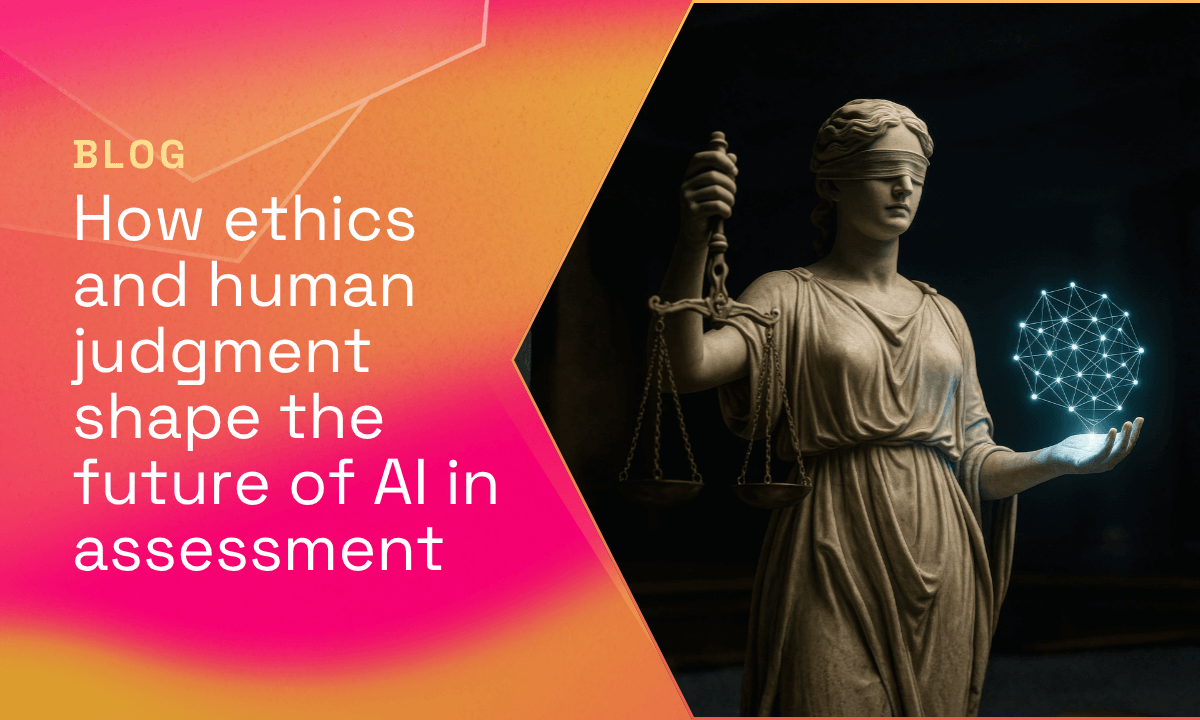The Ultimate Guide to Supporting Employee Growth
How do you support employee growth within your organization? Investing in employee development is crucial for staying competitive and innovative in today's dynamic business environment. By nurturing talent from within, companies can create a culture of continuous learning, improvement, and success. This article explores practical strategies for supporting employee growth and the importance of investing in employee development.
The importance of employee growth in career development
Employee growth plays a vital role in an organization's overall success. When employees are given opportunities to learn new skills, take on challenges, and advance in their careers, they become more engaged, motivated, and loyal. This, in turn, leads to higher levels of productivity, improved performance, and a positive impact on the bottom line. By investing in the growth of their employees, organizations can build a strong foundation for future success.
Understanding the needs of your employees for effective support
To effectively support employee growth, organizations must first understand the unique needs and aspirations of their workers. Each employee is different, with varying skill sets, interests, and career goals. Organizations can gain valuable insights into what motivates and drives their workforce by listening to their employees, conducting regular performance reviews, and using talent assessments like the Core Drivers. This information can then be used to tailor development plans, training programs, and mentorship opportunities that align with the individual needs of each employee.
Identifying high-potential employees
One key aspect of understanding employee needs is identifying high-potential employees within the organization. These individuals possess the skills, drive, and ambition to take on leadership roles and make a significant impact on the company's success. By recognizing and nurturing these employees, organizations can ensure a pipeline of future leaders equipped to drive innovation and growth.
Tailoring development plans
Once high-potential employees have been identified, organizations can create tailored development plans to support their growth and advancement. These plans may include opportunities for additional training, mentorship programs, and exposure to different business areas. Personality assessments, such as the Core Drivers, can assist organizations with this task. By investing in the development of high-potential employees, organizations can cultivate a strong leadership pipeline and drive long-term success.
Strategies for creating a positive work environment for growth
Creating a positive work environment is essential for fostering employee growth and development. Employees thrive in environments where they feel valued, supported, and empowered to take on new challenges. To create such an environment, organizations can implement the following strategies:
.jpg)
Promoting a culture of learning
Encouraging a culture of continuous learning is essential for supporting employee growth. Organizations can provide access to training programs, coaching, workshops, seminars, and online courses to help employees develop new skills and stay up-to-date with industry trends. By promoting a learning culture, organizations can empower employees to take ownership of their development and career success.
Encouraging collaboration and knowledge sharing
Collaboration and knowledge sharing are key components of a positive work environment. By encouraging employees to work together, share ideas, and learn from each other, organizations can create a culture of innovation and creativity. This benefits not only individual employees but also contributes to the overall innovation and success of the organization.
Providing opportunities for advancement
Employees are more likely to stay engaged and committed to their roles when they see opportunities for advancement within the organization. By providing clear pathways for career progression, organizations can motivate their employees to excel and grow within the company. One way to accomplish this is through promotions, cross-functional projects, talent assessments, and leadership development programs.
Utilizing Talent Assessment Tools To Recognize Employee's Core Drivers
Talent assessment tools play a crucial role in helping organizations identify and understand their employees' key strengths and limitations. These tools provide valuable insights into employees' talents, weaknesses, preferences, and aspirations, allowing organizations to tailor development plans and support strategies accordingly. By utilizing talent assessment tools, organizations can gain a deeper understanding of their workforce and create personalized growth opportunities that align with the needs of individual employees.
Conducting Skills Assessments
Skills assessments are another valuable tool for identifying employees' strengths and areas for development. By conducting skills assessments, organizations can determine which skills are most important for each role and create targeted training programs to help employees develop these skills efficiently.
Personality Assessments
Personality assessments can provide insights into employees' motivations, communication styles, and work preferences. By understanding employees' personalities, organizations can create more effective teams, resolve conflicts, and tailor development plans to suit individual preferences. This can lead to higher levels of engagement, productivity, and satisfaction among employees. Using scientifically validated and cutting-edge tools like Deeper Signals Core Drivers can help enhance employees' strengths, close talent gaps, and develop new soft skills.

Providing training and development opportunities for staff empowerment
Training and development opportunities are essential for empowering employees to reach their full potential. By investing in training programs, workshops, and seminars, organizations can equip their employees with the skills and knowledge they need to excel in their roles.
Offering on-the-job training
On-the-job training is valuable for employees to learn new skills and gain hands-on experience. By providing opportunities for on-the-job training, organizations can help employees develop new competencies, improve performance, and prepare for future challenges. This type of training is often more effective than traditional classroom-based learning, as it allows employees to apply new skills in real-world scenarios.
Investing in continuous education
Continuous education programs are another valuable way to support employee growth and development. Organizations can provide financial assistance, study leave, or access to online courses for employees to pursue further education and gain new qualifications. By investing in continuous education, organizations demonstrate their commitment to employee development and create opportunities for career advancement within the company.
Encouraging skill development
Encouraging employees to develop new skills is essential for keeping pace with the rapidly changing business landscape. Organizations can support skill development by providing access to online resources, workshops, and mentorship programs. Encouraging employees to continuously enhance their skills is vital for organizations to stay competitive and adaptable in today's dynamic market.

Cultivating mentorship programs to foster professional advancement
Mentorship programs are vital in fostering professional advancement and supporting employee growth. By pairing employees with experienced mentors, organizations can provide valuable guidance, feedback, and support to help employees navigate their careers and achieve their goals. Mentorship programs benefit both the mentee and the mentor, as they create opportunities for knowledge sharing, skill development, and relationship building within the organization.
Matching mentors with mentees
When implementing a mentorship program, it is essential to carefully match mentors with mentees based on their skills, experience, personalities, and career goals. By ensuring a good fit between mentors and mentees, organizations can maximize the program's effectiveness and create meaningful connections that support long-term growth and development.
Setting clear goals and expectations
To ensure the success of a mentorship program, it is important to set clear goals and expectations for both mentors and mentees. By establishing specific objectives, timelines, and outcomes, organizations can provide structure and direction to the mentorship relationship. This clarity helps both parties understand their roles and responsibilities, leading to a more effective and rewarding experience.
Providing ongoing support and feedback
Ongoing support and feedback are key components of a successful mentorship program. Organizations should provide resources, training, and guidance to mentors and mentees to help them navigate the mentorship relationship effectively. Regular check-ins, feedback sessions, and evaluations can help identify areas for improvement and ensure the program remains valuable and impactful for all participants.
Recognizing and rewarding progress in employee development
Recognition plays a crucial role in motivating employees to continue growing and developing. By acknowledging and celebrating employees' achievements, organizations can reinforce positive behaviors, boost morale, and inspire continued effort. Progress in employee development can be recognized in many forms, including promotions, bonuses, awards, public acknowledgment, and career advancement opportunities. It’s important to understand how individuals wish to be recognized, as preferences differ.
Celebrating milestones and achievements
Celebrating milestones and achievements is a powerful way to recognize employees' hard work and dedication. Whether completing a training program, achieving a certification, or mastering a new skill, recognizing these accomplishments can motivate employees to continue pursuing growth opportunities. By celebrating milestones, organizations show their appreciation for employees' efforts and promote a culture of continuous improvement.
Providing opportunities for advancement
Opportunities for advancement are a key form of recognition for employees who have demonstrated growth and development. By offering promotions, new responsibilities, and leadership opportunities, organizations can reward employees for their hard work and commitment. Providing clear pathways for career progression motivates employees to excel and ensures a strong pipeline of talent for future leadership roles.
Balancing individual goals with organizational objectives
Balancing individual goals with organizational objectives is essential for supporting employee growth while driving business success. Organizations must align their employees' personal aspirations with the company's strategic goals to ensure mutual benefit and long-term sustainability. By creating a shared vision and fostering open communication, organizations can empower employees to pursue their goals while contributing to the organization's overall vision.
Aligning personal development plans with company goals
When creating personal development plans for employees, it is important to align these plans with the company's strategic objectives. By identifying areas where employees' growth aligns with organizational needs, organizations can ensure that employees are developing skills and capabilities that are valuable to the business. This alignment creates a win-win situation where employees grow professionally while contributing to the company's success.
Encouraging employee autonomy and ownership
Encouraging employee autonomy and ownership is another key aspect of balancing individual goals with organizational objectives. Organizations can foster a sense of accountability, motivation, and commitment by empowering employees to take ownership of their development and career progression. This autonomy allows employees to pursue their goals in alignment with the company's mission and values, leading to greater engagement and job satisfaction.
Harnessing feedback loops for continuous improvement and learning
Feedback is essential for supporting employee growth and driving continuous organizational improvement. By soliciting feedback from employees, managers, and stakeholders, organizations can identify areas for growth, address challenges, and make informed decisions to enhance employee development. Feedback loops create opportunities for learning, growth, and innovation, ultimately leading to a more engaged and high-performing workforce.
Conducting regular performance reviews
Regular performance reviews are a valuable way to gather feedback on employees' progress, strengths, and areas for development. By conducting performance reviews, organizations can identify growth opportunities, set clear goals, and provide constructive feedback to help employees improve. This ongoing dialogue fosters a culture of continuous improvement and learning, leading to better performance and higher job satisfaction.
Seeking input from employees
Seeking input from employees is another important feedback mechanism for supporting employee growth. By collecting feedback through surveys, focus groups, and one-to-one discussions, organizations can gain valuable insights into employees' experiences, challenges, and aspirations. This feedback can then be used to tailor development plans, training programs, and support strategies to better meet employees' needs and drive organizational growth.
Maintaining engagement through ongoing support systems
Maintaining employee engagement is essential for supporting ongoing growth and development. Engaged employees are more likely to be motivated, productive, and committed to their roles, leading to better performance and job satisfaction. To maintain high engagement, organizations can implement ongoing support systems that provide employees with the resources, tools, and guidance they need to succeed.
Providing coaching and mentoring
Coaching and mentoring are valuable tools for maintaining engagement and supporting employee growth. By providing employees with access to experienced coaches and mentors, organizations can offer personalized guidance, feedback, and support to help employees navigate challenges and achieve their goals. Moreover, assessment-based coaching facilitates continuous improvement and innovation through reflective exercises and targeted feedback. Coaching and mentoring relationships create opportunities for skill development and career advancement, ultimately leading to a more engaged and empowered workforce.
.jpg)
Offering wellness programs and benefits
Employee well-being is another crucial component of engagement and growth. Organizations can support employee well-being by offering wellness programs, flexible work arrangements, and benefits that promote work-life balance. By prioritizing employee health and wellness, organizations can create a supportive and inclusive work environment that fosters growth, creativity, and resilience.
Encouraging work-life balance
Encouraging work-life balance is essential for maintaining employee engagement and preventing burnout. Organizations can support work-life balance by promoting flexible work schedules, remote work options, and paid time off. By encouraging employees to prioritize self-care and personal well-being, organizations can create a culture that values and supports the whole employee, increasing productivity, job satisfaction, and retention.
In conclusion, supporting employee growth is a strategic imperative for organizations seeking to unlock the potential of their workforce. By investing in employee development, organizations can create a culture of continuous learning, improvement, and success. From identifying high-potential employees to talent assessment and development opportunities, cultivating coaching programs, and maintaining engagement through ongoing support systems, there are numerous strategies organizations can employ to support employee growth effectively. Organizations can build a motivated, engaged, and high-performing workforce by prioritizing employee development.





























